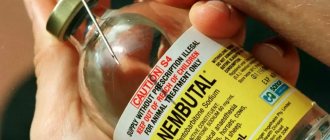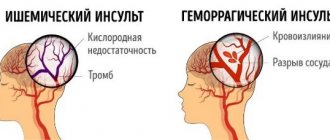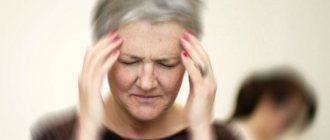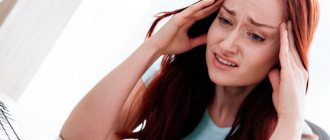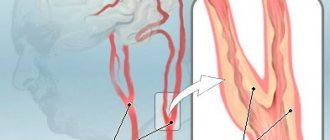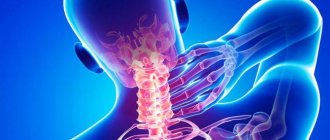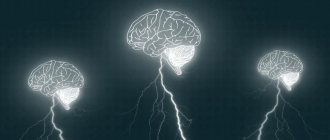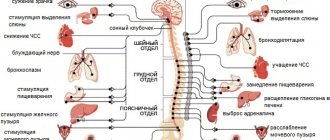Rehabilitation after an ischemic stroke is a set of medical, psychological, social and pedagogical measures aimed at restoring lost functions and returning the patient to a normal lifestyle.
The effectiveness and quality of patient rehabilitation after an ischemic stroke depends on several main factors:
- Active participation in the recovery process, both of the patient and his loved ones;
- The complexity of rehabilitation measures - i.e. comprehensive restoration of functions impaired as a result of a stroke;
- Early start of rehabilitation measures;
- Systematicity and continuity of rehabilitation measures at various stages of the recovery period.
Important aspects of the rehabilitation program for patients who have suffered a stroke are the prevention of complications in the post-stroke period and the prevention of the development of recurrent strokes.
Step-by-step rehabilitation after ischemic stroke
The timing of the start of rehabilitation of patients after ischemic stroke depends on the severity of the cerebrovascular accident. But the fundamental principle is the same - the earlier rehabilitation measures are started, the greater the chances that it will be possible to minimize the risk of developing neurological deficits in the future. For patients in this group, the approach to the rehabilitation process is always individual. For some patients, rehabilitation measures are recommended to begin 24-48 hours after a stroke; for other patients, rehabilitation begins later - after 5-7 days.
An integrated approach to the problem of rehabilitation of patients who have suffered a stroke is the key to the success of the entire complex of treatment measures. The recovery program for stroke patients must take into account many aspects, in particular:
- diet,
- motor, speech and drug rehabilitation,
- social and psychological readaptation.
The process of rehabilitation of a patient after an ischemic stroke requires, in addition to enormous work on the part of the patient himself and his relatives, the efforts of a number of specialists. These include: neurologists, rehabilitation specialists, physical therapy methodologists, speech therapists-aphasiologists, physiotherapists and psychotherapists.
Physiotherapy after stroke in
The Center for Medical and Social Rehabilitation “Blagopuchie” offers patients a whole range of procedures. Our specialists select treatment methods depending on the individual indications of each patient. We equally pay attention to the quality of medical services, and the creation of a warm home environment, and the creation of special conditions for sedentary patients. Cozy rooms, polite and accessible staff at any time of the day, healthy and tasty food, threshold-free coverage, ramps and handrails in all rooms - we have thought through everything to the smallest detail.
We are always happy to provide patients with qualified medical care and return them to their normal lives as much as possible. We hope you enjoy the quality and prices of the services we provide.
Diet of a patient who has suffered an ischemic stroke
Since the leading cause of ischemic stroke is atherosclerosis, which affects the vessels responsible for the blood supply to the brain, the diet after a stroke should help prevent further progression of atherosclerosis.
- Strong meat broths, high-fat dairy products.
- It is necessary to reduce the consumption of cholesterol, which is found in large quantities in butter and animal fats.
- It is recommended to exclude fatty meats (primarily pork) from the diet.
- Reduce salt intake to 3-5 grams per day.
The basis of the diet of a person who has suffered a stroke should be foods containing large amounts of fiber and complex hydrocarbons. First of all, these are fresh fruits and vegetables.
Regular consumption of foods containing polyunsaturated fatty acids can reduce blood cholesterol levels and, accordingly, reduce the risk of developing a recurrent stroke:
- Liquid vegetable oil,
- Seafood,
- Fish.
Recommended to eat:
- Boiled and baked lean meats,
- Low-fat dairy products,
- Wholemeal bread,
- Bread with bran.
In the first days after a stroke, boiled food is better absorbed. Preferably in pureed form.
Motor rehabilitation
Passive gymnastics. Motor rehabilitation of patients who have suffered a stroke is an integral and one of the most important components of the recovery process. The basic method of motor rehabilitation is physical therapy, which begins as soon as the patient’s condition allows. The objectives of physical therapy include restoration (full or partial) of range of motion, strength and dexterity in the affected limbs, balance function, and self-care skills.
In the early period, immediately after a cerebrovascular accident occurs, passive gymnastics is performed. It allows not only to normalize the tone of the limbs, but also to prevent the formation of bedsores. Passive gymnastics is performed by exercise therapy specialists together with the patient’s relatives.
When performing gymnastics, passive movements of paretic limbs are performed at a slow pace, carefully, slowly, while trying not to cause pain or increase muscle tone. Such gymnastics is first performed on the healthy side and then on the sore side. It is important to start proximally, in isolation at each joint. In this case, 8–10 movements are performed in each joint.
Active gymnastics. The next stage of recovery is the beginning of active gymnastics, which begins with simple movements of the limbs and becomes more complex as the patient becomes more active. The patient is taught to sit up in bed, maintain balance and stand up, then walk, first accompanied or with support, and then independently.
Great importance is given to motor rehabilitation in the affected upper limb, in particular the restoration of fine motor skills, which is the key to full social and everyday readaptation. The patient learns simple self-care skills, in particular eating, personal hygiene, using the toilet and bathroom, as well as dressing independently, in stages.
The duration of the various stages of motor recovery depends, first of all, on the extent of the area of brain damage. An important part of rehabilitation, both motor and psychological, is the early involvement of patients in household work and the preparation of able-bodied patients to go to work.
Massotherapy
Along with physical therapy, positioning of the lying patient and therapeutic massage are important for the recovery of the patient. The purpose of these therapeutic measures is to prevent the development of muscle contractures and maintain normal joint function, prevent bedsores and pulmonary complications, primarily congestive (hypostatic) pneumonia. When conducting massage sessions, certain principles must be observed:
- the extensor muscles are usually massaged on the arm,
- on the leg - the flexor muscles of the leg and the dorsum of the foot.
Massage is carried out throughout the entire recovery period.
Physiotherapeutic procedures, acupuncture, acupressure, cryotherapy, and water procedures are widely used as additional methods that speed up the rehabilitation process.
Physiotherapy and rehabilitation treatment. Treatment of strokes
The full process of recovery and rehabilitation of patients who have suffered a stroke and brain injury requires time and a certain treatment regimen. It becomes especially difficult for patients with lost motor functions without a 24-hour hospital, which is available in the clinic.
IMPORTANT! The main distinctive feature of the rehabilitation course for the consequences of brain injuries and the treatment of strokes at the Alternative Treatment Center “Alternative+” is an integrated approach.
With any damage to the brain (stroke, surgery, trauma), the nervous tissue around the lesion goes into a kind of hibernation. Using micropolarization procedures, magnetic stimulation and drug treatment, our specialists restore the functions of the “numb” nervous tissue around the source of damage and “turn on” the preserved, “living” areas and centers of the brain.
The recovering areas of the brain “come to life” and become active when nerve impulses, “signals” from paralyzed limbs appear. These impulses are created and artificially simulated by a number of hardware and other procedures, including kinesitherapy, neuromyostimulation, physical therapy, chivamat massage, etc. (see the full list of our capabilities below).
Also, during these classes, movements that are characteristic of a healthy person are developed, modeled and strengthened. All these activities - “awakening” parts of the nervous tissue of the brain, restoring the flow of impulses to them from paralyzed limbs and training them - are carried out in parallel.
PHYSIOTHERAPY
The clinic successfully uses the latest domestic and foreign techniques for the recovery of patients after strokes, brain injuries and neurosurgical operations.
The Center for Restorative Treatment “Alternative+” uses the following methods:
Transcranial micropolarization
Device AMGE-01 'Polaris' for transcranial micropolarization
It is performed using the physiotherapeutic device AMGE-01 "Polaris" . The procedure involves applying a physiological frequency current to the damaged area of the brain. The technique allows you to quickly and effectively restore the functions of the “numb” nervous tissue around the source of damage and “turn on” the remaining, “living” areas and centers of the brain. Micropolarization normalizes the condition of nervous tissue and optimizes brain function for any lesions except tumors.
IMPORTANT! This technique also gives good results in the treatment of delays in psycho-speech development and alalia in children.
Rhythmic transcranial magnetic stimulation (rTMS)
The technique has long been actively used in foreign countries in the treatment of strokes. She came to Russia 10 years ago and during this time she showed herself in the best possible way.
How does it work?
The essence of the procedure is to influence damaged nerve tissue and pathways with a series of magnetic pulses. As a result, nerve conduction is restored in the brain tissue and movements in paralyzed limbs are improved.
When is it used?
This procedure is effective for diseases such as:
- acute cerebrovascular accident;
- traumatic disease of the brain and spinal cord
- Parkinson's disease;
- severe forms of depression;
- spastic conditions in multiple sclerosis;
It should be emphasized that one of the main advantages of (rTMS) is its effectiveness in long-term injuries and strokes. The rTMS procedure is implemented using the NeuroMS stimulator.
Dry immersion method
Medical system for simulating weightlessness “MEDSIM” or the dry immersion method (from the Latin immersio - immersion).
Dry immersion method
Initially, the zero-gravity simulation system was created for the space industry, where it is still used in the training and rehabilitation of astronauts after a long stay in orbit. Today, the immersion bath is successfully used in the Federal Scientific and Clinical Center for Specialized Types of Medical Care and Medical Technologies of the Federal Medical and Biological Agency (formerly Clinical Hospital No. 83 of the FMBA), the Scientific Center for Children's Health of the Russian Academy of Medical Sciences and other Moscow clinics.
How does it work?
The “dry immersion” method without medications stimulates the adaptation and compensatory mechanisms of various body systems by changing the gravitational environment. This is achieved through non-contact immersion of a person in an aquatic environment, which almost completely simulates the effect of weightlessness. In a pool filled with water at 36-37.5 degrees (human body temperature), a durable waterproof fabric 2.5 - 3 times larger than the water surface is placed on the surface of the water. The patient sits on it. The pool is equipped with an elevator, with the help of which the patient is immersed on this fabric into the water column so that he does not touch the bottom of the pool and hangs freely in the water column. Thus, all effects of gravity on the body are almost completely eliminated, relieving the load and giving rest to the spine and large joints, back, paralyzed or spasmed muscles. This facilitates the restoration of the brain, heart and blood vessels, and normalizes blood pressure. The body itself triggers all of the above mechanisms. The duration of the procedure is up to 45 minutes.
When is it used?
- in the treatment of strokes and brain injuries with swelling of brain tissue;
- for paralysis and paresis after strokes and injuries to speed up the process of motor rehabilitation;
- for spastic disorders after strokes and brain injuries;
- for delayed psycho-speech development (alalia) and hyperactivity syndrome in children
- with edematous syndrome (circulatory failure, liver cirrhosis, glomerulonephritis);
- with hypertension stage I - II;
- with neurocirculatory dystonia of the hypertensive type;
- for degenerative-dystrophic diseases of the musculoskeletal system;
- for reflex-tonic disorders;
IMPORTANT! Today, the “dry immersion” method is successfully used in the rehabilitation of children with perinatal damage to the central nervous system (hyperexcitability syndrome, muscle hypertonicity syndrome, delayed psycho-speech development) and cerebral palsy.
Magnetotherapy
The clinic has several magnetic therapy devices, each of them performs its own important function.
Treatment with a rotating magnetic field. Magnetoturbotron.
Device "Magnetoturbotron"
The technique is carried out using an expert-class device “Magnetoturbotron”. There are only a few such devices in our city, and one of them belongs to the Rehabilitation Treatment Center.
How does it work?
The device has a systemic effect on the entire body, providing anti-edematous, analgesic and anti-inflammatory effects, which makes it possible to effectively treat osteochondrosis and arthritis. The device is also used to normalize blood pressure and improve blood supply to the brain in case of hypertension, vegetative-vascular dystonia, and during recovery from strokes and head injuries. It has a systemic effect on the entire body as a whole, enhancing the therapeutic effect of other physiotherapy methods used in the clinic. After 10-12 procedures, a significant improvement in the patient’s condition is noticed. The average time of one session is 20-30 minutes.
When is it used?
Magnetoturbotron is used in the treatment of diseases such as:
- treatment of the consequences of strokes and brain injuries;
- vegetative-vascular dystonia and hypertension;
- heart diseases;
- diseases of the joints and spine (arthritis, arthrosis, osteochondrosis);
- discirculatory vascular disorders of brain activity in the elderly;
- skin diseases;
- pathology in the field of urology and gynecology
Pulse magnetic therapy device "Teslamed"
The Teslamed pulsed magnetic therapy device is used for:
- neuritis of the facial, radial, trigeminal nerves;
- spastic disorders after strokes;
- for osteochondrosis, radiculitis with radicular syndrome to eliminate pain;
- bladder atony and urinary incontinence after strokes;
Magnetic therapy device "Alimp"
The Alimp magnetic therapy device available at the Center effectively eliminates pain in the joints that occurs during rehabilitation treatment during physical activity of a paralyzed limb.
Medical fact>>>>> Complex magnetic therapy, in addition to its use in treating the consequences of strokes, effectively relieves swelling, inflammation and has an analgesic therapeutic effect in the treatment of osteochondrosis and back pain.
Hardware motion correction
"AKorD Multimyostim"
Produced using the AKorD Multimyostim and Stimul devices. They stimulate paralyzed muscles during movement, walking, model and, as it were, “push” the paralyzed limb to normal gait or movement.
The exact stimulation parameters are determined by a computer based on the step size of a particular patient, so each procedure is selected individually for the individual patient.
IMPORTANT! The procedure gives effective results in restoring motor functions in case of paresis and paralysis.
"AKorD Multimyostim" is also effective in the treatment of osteochondrosis, scoliosis and posture correction . During treatment sessions, with the help of apparatus impulses, the muscle corset is strengthened, which aligns and secures the correct position of the spinal column. In addition, it significantly eases the load on the hip joints.
Device "Imitron"
Device "Imitron"
to simulate walking
Essentially, this is a simulator that simulates walking.
How does it work?
The operating principle of the device is simple: the patient’s torso is statically secured by a stabilization system in a vertical position, while the legs do not touch the floor, which eliminates any load on them. Then the patient begins to move his paralyzed legs, easily helping himself with the movement of his hands (they are connected to the lower limbs with special cables and levers). In this case, active-passive working out of the muscles and joints of the legs occurs. At the same time, the upper limbs with the shoulder girdle actively work, setting the entire system in motion. The abdominal and back muscles, rotations of the torso and pelvis are also trained.
When is it used?
“Imitron” eliminates problems that arose due to prolonged sitting or horizontal position. The device is used to develop movements in the lower extremities in patients with ailments such as paresis, paralysis of the lower extremities, as well as with injuries to the brain and spinal cord.
Thanks to classes on Imitron, the risk of complications from the genitourinary system is reduced . Moreover, the stagnation of all fluids in the lower half of the body is reduced. The Imitron device motivates patients well. On average, the duration of one procedure is half an hour. It is advisable to carry out the exercises until the patient is fully on his feet.
Verticalizer
Verticalizer
This is a device that brings the patient's body into an upright position. It is used in cases where the patient has been in a horizontal position for a long time due to strokes, brain injuries, paralysis, or vegetative states.
How does it work?
The device allows the patient to take a vertical position and train the functioning of the vestibular apparatus during the process of recovery from strokes and brain injuries.
When is it used?
This procedure is indicated for patients with diagnoses such as cerebral palsy, stroke, spinal cord and brain lesions, etc.
Device "Khivamat-200 evidence"
Device "Khivamat-200 evidence"
The device is used to influence body tissues. The original feature of this device is that the procedure is carried out like a regular light massage session, but its effectiveness is greatly enhanced due to the effect of deep oscillation.
How does it work?
Due to the special technology of influence “Hivamata” (deep oscillation), the patient’s swelling decreases and deep sensitivity of the damaged limbs is restored. The device helps eliminate congestion, improve blood supply and metabolic processes in tissues, and also accelerates the process of restoring movements after strokes and brain injuries.
Device "Khivamat-200 evidence"
- disorders of muscle tone and/or contractility (hemorrhagic and ischemic strokes, traumatic brain and spinal injuries, nerve and plexus injuries, multiple sclerosis)
- pain of various origins (traumatic injuries of the musculoskeletal system, reflex and radicular syndromes of spinal osteochondrosis, migraine)
- venous circulation disorders (chronic venous insufficiency of the extremities)
- disorders of lymph circulation (lymphedema in the postoperative period after radical treatment of malignant tumors of the breast, testicle, floor of the mouth, prostate, thyroid gland, tongue, including during radiation therapy)
- tissue trophic disorders (Sudek's disease, deforming osteoarthritis, osteoporosis, ankylosing spondylitis, rheumatoid polyarthritis, trophic ulcers of the leg, bedsores)
- osteoporosis
- conditions after joint replacement
The number of health procedures depends on the diagnosis, age and other factors. Treatment is prescribed by a doctor and individually selected for each patient.
Biofeedback (BFB)
Stabilometry. Restoring support and balance functions on the Stabilan stabilization platform
Stabilography is one of the new and promising technologies in medical rehabilitation. The technique is aimed at restorative treatment of neurological patients with severe impairments of motor functions, balance and support functions. Patients undergo a rehabilitation course using the Stabilan-01 device .
Stabilan -01 device for restoring the functions of support and balance
Stabilographic training is aimed at developing the correct vertical posture in the patient, developing coordination and the functions of balance and support, and then normal gait. During therapeutic exercises, the patient learns to move the center of gravity with control of his own movements on the computer screen, while impaired or lost functions of balance and support return much faster and to a greater extent than with standard medicinal liver therapy and physical therapy.
The Center also has a modification of the device “Stabilan-01-3” - a power chair - for seriously ill patients.
When using the Stabilan device in treatment, the clinic’s doctors rely on the methodological recommendations and instructions of the head of the neurorehabilitation department of the Neurological Center of the Russian Academy of Medical Sciences, Moscow, Doctor of Medical Sciences, Professor L.A. Chernikova. trained to use the Stabilan device in its department in Moscow.
This technology makes it possible to regulate and correct activities that are difficult to consciously control.
How does it work?
During the procedure, the patient learns physiological control of movements in paralyzed parts of the body. Special sensors are placed on the muscles of non-working limbs (thigh, lower leg, shoulder or forearm), recording muscle tone and minimal movements in the paralyzed arm or leg. Then the patient performs certain exercises, while the muscles of the paralyzed limb contract and this is visible to the patient on the computer screen. Gradually, the patient begins to control the movements himself, learning them again. In milder cases, a sensor glove is placed on his hand, which acts in the same way. During the procedure, the patient is asked to play backgammon, chips, and the movements of the hand are reproduced on the screen, which also restores movements in the hand.
When is it used?
This method is successfully used in the treatment of patients with paralysis and paresis after strokes and injuries of the brain and spinal cord.
After using biofeedback, a persistent positive effect of therapy is observed in 80% of patients, while the rest show a marked improvement in their condition.
Device "Corvit"
This is a plantar support load simulator. The uniqueness of the device lies in the fact that it simulates the physical stress on the feet experienced during walking and slow running. Paralyzed patients are deprived of this. The supporting load on the feet that Corvit provides directly activates the areas of the cerebral cortex responsible for walking and significantly speeds up the process of restoring movements. The device has undergone extensive clinical trials and is successfully used in the largest medical centers of the country, such as the Research Institute of Pediatric Traumatology and Surgery, the Center for Speech Pathology and Neurorehabilitation, the State Research Center of Neurology of the Russian Academy of Medical Sciences, the Central Clinical Hospital of the Russian Academy of Sciences, the Federal State Institution “Rehabilitation Center” of the Administration of the President of the Russian Federation and many other institutions.
How does it work?
During the procedure, special orthoses are put on the patient's legs. Then the feet are given an artificial load with compressed air, simulating the load on the feet when walking. In this case, the cerebral cortex, which is responsible for movement, is activated, both in the paralyzed leg and in the arm. As a result, the rate of recovery for paresis and paralysis increases by 16-18% compared to standard therapy.
When is it used?
Effective in rehabilitation after ischemic stroke, traumatic brain and spinal injuries, cerebral palsy, musculoskeletal injuries, prolonged bed rest in cardiac patients and intense physical activity in athletes.
Regent costume
The clinic has a special load suit “Regent” . It is a system of elastic rods. In the “Regent” suit, the patient’s gait is simulated; it is as if he is re-learning how to walk correctly, which significantly speeds up the process of fully getting back on his feet. Also, training in a suit successfully corrects spastic disorders.
“Regent” was originally created to restore motor skills to astronauts who had been in a state of weightlessness for a long time and had become unaccustomed to the normal movements of a “healthy person”; then it was successfully used in the treatment of paresis and paralysis.
Treadmill with weight bearing system
Treadmill with weight bearing system
The scheme of operation of this complex is simple: a patient with paralyzed limbs is secured above a treadmill with a special device, and then he is given a load of 15-20% of his own weight. The speed of the track is about 200 m/hour. During this procedure, the patient re-trains walking skills in the most gentle manner possible. In a complex of rehabilitation procedures after brain injuries or strokes, the weight unloading system is very effective: it speeds up the process of restoring motor functions of the legs by approximately 18%. It is used for the rehabilitation of patients with severe motor pathology, who have difficulty moving only with the help of additional support.
Hardware complex "MBN Stimul"
It is a more complex system (both in software and technical terms) than the unloading track, but at the same time more efficient. There are only a few copies of such equipment in Voronezh, and one of them is in our Center. This is the only complex of its kind that fully implements the technology of artificial movement correction. It is carried out using programmed electrical stimulation of muscles during pathological walking.
The peculiarity of the method is that muscle stimulation during the procedure occurs in strict accordance with their natural excitation and contraction in the motor act. Thanks to this, in the process of long-term training, the functional state of the muscles improves, incorrectly performed movements are corrected, and a motor stereotype that approaches the norm is gradually developed.
"MBN Stimul" allows you to significantly improve motor function, the ability to move independently over significant distances even in very severe conditions:
- after strokes, brain injuries and conditions after neurosurgical operations with paresis and paralysis
- after spinal cord injuries and their consequences at various levels, accompanied by flaccid or spastic paresis and disorders of the pelvic organs;
- with the consequences of poliomyelitis, accompanied by paresis;
- with cerebral palsy;
- for scoliotic disease;
- with osteochondrosis of the spine;
- with the consequences of fractures of the thoracic and lumbar vertebrae
The MBN Stimul complex has been used since the spring of 2013 and has proven itself to be the best.
Neuromyostimulation
Medical fact>>>>> Neuromyostimulation is a therapeutic procedure that allows stimulation of the muscles of paralyzed upper and/or lower extremities with electric current. This effect helps to restore and increase the tone and strength of the muscles of the limbs. Thanks to this technique, specialists are able to effectively restore lost motor functions to post-stroke patients.
How does it work?
It allows you to stimulate the muscles of paralyzed upper and/or lower extremities and achieve restoration of motor functions lost after a stroke. Stimulation is carried out through electric current pulses that are as close in shape as possible to physiological ones.
When is it used?
Neuromyostimulation is indicated for:
- paresis and paralysis after strokes, brain injuries and neurosurgical operations;
- neuritis and neuropathies of the facial nerve, radial, ulnar, peroneal and tibial, median, sciatic;
- primary muscle atrophy (consequences of radiculitis, polyneuritis, plexitis);
- secondary muscle atrophy (as a result of prolonged immobilization during fractures, surgical interventions);
- pain due to osteochondrosis, radiculitis, intervertebral hernia;
- pain due to neuralgia, arthritis, arthrosis;
- pain due to sports injuries;
- atony of smooth muscles of internal organs;
- to improve peripheral circulation
The procedure is carried out using a Dutch-made device, which is considered the best in its class.
Speech rehabilitation
Speech disorders after a stroke are observed in more than a third of patients who have suffered acute cerebrovascular accident. It is necessary to understand that the concept of “speech impairment” implies not only a violation of one’s own voluntary speech (motor aphasia), but also a violation of the understanding of the speech of others (sensory aphasia), forgetting of individual objects and actions (amnestic aphasia), and there are also combined manifestations of these conditions. Another common type of speech impairment after a stroke is dysarthria - a violation of the correct articulation of sounds while maintaining “inner speech”, understanding the speech of others, reading and writing.
The main factor for success in restoring speech functions is systematic long-term classes on the development of speech, reading and writing, which are conducted by a speech therapist-aphasiologist or under his direct supervision.
It is necessary to begin speech restoration classes in the acute period of a stroke, as soon as the level of consciousness allows. At this stage, classes are short - no more than 15-20 minutes. Subsequently, the duration increases to 30-45 minutes or more. In such a situation, speech isolation of the patient is very dangerous. Relatives and friends of the patient must understand that not only special classes, but also ordinary constant everyday speech contact with the patient and reading books in themselves contribute to the restoration of both his own speech and understanding of the speech of others. Consequently, the timing of the patient’s return to normal life after a stroke depends on the atmosphere created by the loved ones around him.
How to speed up recovery after a stroke
More than 80% of all stroke cases are associated with ischemia of a part of the brain, the rest are associated with hemorrhage. After the affected area of the brain is deprived of blood supply, necrosis processes begin here. Depending on which area is affected, the symptoms of a stroke may vary.
Recovery after a stroke can take months and years, but it is important to begin the first rehabilitation measures after the patient’s condition has stabilized, in the early post-stroke period. Treatment begins already in intensive care: the drugs used at this time are designed to reduce the intensity of the lesion and prevent the expansion of the necrosis zone, and reduce swelling of the affected part of the brain. In the first three to five days after a stroke, the likelihood of a second stroke is especially high, so the patient is under constant medical supervision.
Early rehabilitation begins within a few days, usually 6-8 days after a brain accident. At this time, doctors recommend massage of the arms and legs: light relaxing stroking of spasmed muscles and gentle kneading movements for muscles that have lost tone. These actions help restore motor function in a shorter time: they stimulate neurons whose functions can be restored, and those that will replace the functions of dead cells. In the future, the main method of physical rehabilitation will be exercise therapy in the classic or original version. At first, this is passive gymnastics, when movements in the patient’s limbs are carried out by an assistant. As soon as the patient can make minimal movement on his own, he should be given this opportunity and encouraged in every possible way. Thus, passive gymnastics is gradually transformed into active.
Restoration of speech after a stroke is closely related to the restoration of swallowing function. To do this, they use massage of the tongue and cheeks, massage of the palms and fingers, gymnastics for the face, and practice the pronunciation of sounds and words. Articulation may not return completely, but every month, even in complex patients, with regular work and the right approach from specialists, progress will be visible.
Rehabilitation after a stroke is always more effective if it takes place in a specialized neurological center. Such institutions, as a rule, have all the necessary diagnostic tools and a full staff of specialists to support rehabilitation. The experience of the doctor who coordinates the recovery process is important, since the consequences of a stroke can be less serious if the necessary drug or physical procedure is included in the rehabilitation scheme in a timely manner.
Drugs to restore brain function should activate metabolic processes in neurons and satisfy their need for oxygen, which is especially important in the early period. Early use of neuroprotectors and antioxidants helps prevent cell death in the area that borders the lesion, as swelling quickly increases here. Thus, with the help of medications, the doctor can reduce the effects of a brain accident and speed up recovery. Glycine , is actively used at all stages . In the early post-stroke period, glycine binds aldehydes and ketones, which are formed in large quantities in the lesion, and significantly reduces the degree of neuronal damage. The supply of glycine molecules in the drug stimulates the production of its own glycine in the brain, which also helps speed up rehabilitation and quickly establish all metabolic processes in the nervous tissue.
Restoring metabolic processes in the brain helps to improve the emotional-volitional sphere. Often relatives and doctors are faced with the fact that after a stroke a person does not want to change anything, does not want to put in the effort to learn to walk and talk again. This is partly a psychological problem, but it is largely due to biochemical disturbances in the brain. Glycine helps restore motivation, improves emotional background, and reduces irritability. The use of Glycine in the acute period, and long-term use throughout the recovery period, is justified by the fact that the drug has no contraindications and is an analogue of an amino acid that is synthesized by the body itself.
Drug rehabilitation
Drug therapy in patients after a stroke is aimed at restoring the functions of the affected areas of the brain that were “inhibited” as a result of the cerebral catastrophe, improving cerebral blood flow, as well as preventing the development of postoperative complications.
Drug rehabilitation includes a range of metabolic drugs and biogenic stimulants. This group includes the following drugs:
- amino acids,
- adenosine triphosphate,
- B vitamins, etc.n
- nootropic drugs,
- Essentiale.
Biogenic stimulants include:
- ginseng tincture,
- aloe extract, etc.
Anticholinesterase drugs are prescribed according to indications, which include:
- oxazyl,
- prozerin,
- improving neuromuscular conduction.
If muscle spasticity is detected, muscle relaxants are used, such as:
- baclofen,
- isopropane,
- mydocalm.
In cases of increased plastic tone, cyclodol and other drugs are prescribed.
In the absence of contraindications, all patients who have suffered an ischemic stroke receive drugs that improve the rheological properties of the blood, in particular, aspirin and new generation antiplatelet agents (Plavix, Tiklid, etc.). Therapy is prescribed and carried out only under the supervision of a specialist.
Prevention of recurrent stroke
The main goal of preventing recurrent disruption of cerebral blood flow is to reduce the risk of developing this disease by eliminating the factors leading to the development of stroke. The main risk factors include:
- Arterial hypertension,
- Hyperlipidemia,
- Smoking,
- Some heart diseases with heart rhythm disturbances (atrial fibrillation) and/or valve damage,
- Insufficient physical activity
- Obesity,
- Diabetes.
Repeated strokes in the overwhelming majority develop according to the same mechanism as the first ones, so it is necessary to determine the possible genesis of the first stroke. For all types of ischemic stroke, long-term (almost lifelong) use of antiplatelet drugs is recommended. For ischemic strokes that develop as a result of cardioembolism, along with antiplatelet agents, the use of anticoagulants (phenylin) under the control of blood prothrombin is indicated.
All patients who have suffered a cerebrovascular accident of the ischemic type must necessarily consult a vascular surgeon with an ultrasound examination of the main arteries supplying the brain. Since one of the main causes of ischemic stroke is atherosclerotic damage to the carotid arteries. When their pathology is identified and there are indications, the issue of surgical intervention or stenting is decided.
